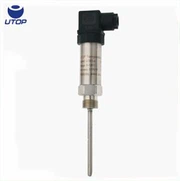Pressure Transmitter Installation and Usage Precautions
Aug 26, 2025
Proper Selection:
Determine whether gauge pressure, absolute pressure, or differential pressure is require for the pressure transmitter.
Select an appropriate measurement range (typically, operating pressure should be between 1/3 to 2/3 of full scale).
Choose diaphragm material and sealing materials (e.g., O-rings made of fluororubber, EPDM, etc.) based on the medium.
Consider temperature, vibration, and corrosive environments.
Installation Orientation:
Generally no orientation restrictions, but note high/low pressure side markings (H/L) for differential pressure transmitters .
For liquid pressure measurement, place pressure ports on the side or bottom of the pipe to prevent gas accumulation.
For gas pressure measurement, place pressure ports at the top of the pipe to prevent liquid or condensate from entering the pressure tubing.
Pressure Tubing Installation:
Keep pressure tubing as short and straight as possible to minimize hysteresis.
Liquid Media: Pressure tubes should slope downward to facilitate air venting.
Gas Media: Pressure tubes should slope downward to facilitate liquid drainage (or install a condensate trap).
Steam Measurement: A condensate trap must be installed, ensuring consistent condensate levels on both sides.
Electrical Connections:
Use shielded cables and keep away from high-voltage lines.
Ensure the shielding wire is grounded.
Observe power polarity (4-20mA two-wire system).
Zero Calibration:
Perform zero calibration after installation under no pressure or atmospheric pressure (especially for differential pressure transmitters).
Operate via local buttons, HART handheld communicator, or host computer software.
Frost and Clog Prevention:
In cold regions, insulate or heat-trace pressure tubing.
For crystallizing or high-viscosity media, install isolation fluid or flushing devices.
For details, please contact Qi Huang: qihuang@utopsensor.com







